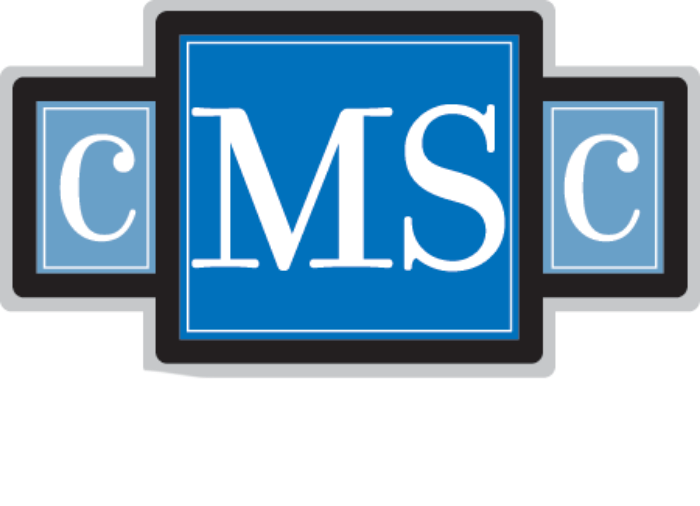Practice Points
- A higher burden of depression symptoms and greater physical disability were associated with decreased odds of engaging in physical activity in persons with multiple sclerosis (MS).
- Better self-reported cognitive function was associated with decreased odds of engaging in any exercise but was not associated with exercise frequency in persons with MS.
- These results highlight the need for cognitive and mental outcomes to be considered in the design of exercise regimens for persons with MS.
Persons with multiple sclerosis (MS) are encouraged to engage in physical activity that aligns with their interests and abilities because exercise is “essential to general health and well-being, [and] is helpful in managing MS symptoms.”1 Previous research has shown that people with MS who are more physically active report lower levels of fatigue, cognitive impairment, depression, pain, spasticity, and physical disability, as well as improved muscle strength, higher social support, higher self-efficacy for managing MS, and higher quality of life (QOL).2–6 There is also evidence that exercise may exert neuroprotective effects in MS.5,7,8 Although the directionality of most of these relationships is not clear and may even be bidirectional, the evidence points to physical activity having a wide range of benefits in people with MS.
Because people with MS are less physically active than the general population, it is important to elucidate the nuanced relationships that likely underlie physical activity engagement to guide the design of effective interventions for people with MS.2 A key correlate of physical activity in people with MS is the severity of their physical impairments,6,9 and there is growing literature suggesting that increased cognitive impairment and poorer emotional health (ie, depression) also negatively impact physical activity levels.6,10–12 This latter observation is concerning because the prevalence of cognitive impairment ranges from 34% to 65%, and depression and anxiety are found in more than 20% of people with MS.13–15 Unfortunately, most previous studies have been modestly sized, and many incompletely adjusted for putative sociodemographic confounders (ie, age, sex, and race), which limits inference.
There is also a need to examine multiple definitions of physical activity for people with MS. A commonly used and valid measure is the Godin Leisure-Time Exercise Questionnaire (GLTEQ), which can be scaled into the categorical Health Contribution Score (HCS), a measure of health-promoting physical activity in people with MS.16,17 However, there is evidence that the HCS may insufficiently capture light physical activity.18 Alternative definitions could be informed by current guidelines. The National Center on Health, Physical Activity and Disability guidelines for exercise by ambulatory people with MS includes cardiovascular training (eg, aquatic fitness class, walking) of 20 to 60 minutes at least 3 to 4 days per week at a pace that feels good to the individual and strength training (eg, free weights, stretch bands) of 10 to 15 minutes for 2 to 3 sessions per week.19 Similarly, recommendations by the Canadian Physical Activity Guidelines for people with MS with mild to moderate disability include 2 weekly sessions of 30 minutes of moderate aerobic activity and 2 weekly sessions of strength training for major muscle groups.20 Together, the guidelines suggest that ambulatory people with MS should engage in a minimum of 4 sessions of physical activity per week.
To date, no study has characterized the extent to which physical, emotional, and cognitive variation are independently associated with multiple operational definitions of physical activity in people with MS, in addition to accounting for likely confounders. To begin to address these knowledge gaps, we present findings from a cross-sectional investigation of a large sample of people with MS and 3 definitions of physical activity. We hypothesize that people with MS reporting poorer emotional and cognitive health will be less engaged in physical activity, have decreased odds of meeting minimum physical activity guidelines, and, among those who do exercise, engage in fewer weekly physical activities.
Methods
Study Population and Variables of Interest
iConquerMS, an initiative of the Accelerated Cure Project for MS, is an online people-powered research network where people with MS and other MS stakeholders can participate in and drive MS research. Since 2014, iConquerMS has collected data on participants, including sociodemographics, MS symptoms, and Quality of Life in Neurological Disorders (Neuro-QOL)21 survey answers via an online portal; participants can complete survey components at different points in time to accommodate their capabilities, as well as update their surveys over time. In 2016, the GLTEQ was launched and, through February 2021, had been completed by 1855 people with MS. The GLTEQ asks about the number of average weekly physical activity sessions lasting at least 15 minutes that are either strenuous (heart beats rapidly, eg, running), moderate (not exhausting, eg, fast walking), or mild (minimal effort, eg, easy walking).16 The outcomes of interest were 3 operational definitions based on GLTEQ responses: (1) a continuous count of the total number of sessions across intensities within a week; (2) the HCS, which is an ordered categorical variable of a weighted score of physical activity sessions by intensity (counts of mild [0], moderate [1], and strenuous [2] physical activity are multiplied by 3, 5, and 9 metabolic equivalents, respectively, which is then summed and categorized: <14 units = insufficiently active, 14–23 units = moderately active, ≥24 units = active)16; and (3) a binary variable capturing a minimum/adequate number of physical activity sessions within a week (0 = <4 sessions; 1 = ≥4 sessions).
The predictors of interest were the Neuro-QOL short form T scores for cognitive function (Cognition Function short form; higher scores represent better cognitive functioning), positive affect (Positive Affect and Well-Being short form; higher scores represent a more positive outlook), physical disability (Lower Extremity Function short form; higher scores represent fewer impairments), depression (Depression short form; higher scores represent more symptoms of depression), and emotional dyscontrol (Emotional and Behavioral Dyscontrol short form; higher scores represent more difficulties in emotional regulation).22 Neuro-QOL is a validated tool for assessing health-related QOL in adults and children with neurologic conditions, such as MS. Raw summed scores for each Neuro-QOL short form can be calibrated to a reference population where the mean ± SD score is 50 ± 10, resulting in a T score.22
Several covariates were considered as potential con-founders of the relationships between cognitive, emotional, and physical predictors and engaging in weekly physical activities, including age, biological sex, race (White, Black, other), MS subtype (relapsing-remitting, secondary progressive, primary progressive, clinically isolated or radiologically isolated syndrome), season of survey completion (spring, summer, autumn, winter), region of US residence (south, west, northeast, and midwest), and body mass index (BMI) (low, <18.5; normal, 18.5–24.9; high, 25.0–30.0; very high, >30.0). For the categorical BMI and MS subtype variables, missing data indicator variables were used to maximize the number of observations retained for analysis (≤2.5% of observations had missing values for BMI or MS subtype; Table 1).
Because Neuro-QOL captures current/recent health state (ie, “In the past 7 days…”) and the GLTEQ pertains to average weekly activities, we limited the study population to people with MS who completed these 2 surveys within a day. We further restricted to people with MS who completed these surveys within 30 days of their sociodemographic surveys and were US residents to minimize information bias. The final study population consisted of 640 people with MS.
Statistical Analyses
Multivariable regression models were conducted for each weekly physical activity outcome. The first model used a zero-inflated negative binomial regression model to characterize relationships with the average count of weekly physical activity sessions irrespective of intensity. This model simultaneously examined relationships for the probability of engaging in any weekly exercise (0 sessions vs ≥1 session via the logistic regression component of the model) and relationships for the count of weekly physical activities among those who exercised (via the negative binomial component of the model). The coefficients of the negative binomial component of the model can be exponentiated and interpreted as relative ratios. The second model used an ordered logistic model to characterize associations for the probability of engaging in higher levels of physical activity as defined by the categorical HCS (0 = insufficiently active, 1 = moderately active, 2 = active). The third multivariable model used a logistic regression model to characterize relationships with the binary outcome of engaging in at least a minimum number of weekly physical activity sessions (0 = <4 sessions; 1 = ≥4 sessions). The positive affect and emotional dyscontrol T scores were found to be highly correlated (absolute r2 > 0.6) with the depression T score and were, therefore, excluded from subsequent analyses because the primary hypotheses relate to depression and cognitive impairment (Figure S1, available at the bottom of this article). For the binary outcome, exploratory models stratified by sex, BMI, and physical disability (top 50% vs bottom 50% of lower extremity functioning T scores) were also conducted.
Model 1 and model 3 analyses were conducted in R version 4.0.4 using tools from the Pscl package and the Stats package, respectively. The Stats package was used to conduct correlation tests between Neuro-QOL scores. The Car package was used to examine variance inflation in these models. Model 2 analyses were conducted in Stata statistical software, release 13.1 (StataCorp LP) using the ologit function. The oparallel function assessed whether the predictors satisfied the proportional odds (parallel lines) assumption underlying the ordered logistic regression model compared with a fully generalized ordered logistic regression model (which relaxes the parallel regression assumption) using a likelihood ratio test, a score test, a Wald test, a Wolfe-Gould test, and a Brant test. A 2-sided α = .05 was considered statistically significant.
Ethics Board Approval and Informed Consent
Since October 2014, an independent ethics review board (WCG IRB, formerly Copernicus Group IRB) has approved the online portal content, survey instruments, and informed consent and collateral materials for the iConquerMS people-powered research network. All participants electronically provided informed consent before joining iConquerMS, acknowledging that their deidentified data will be used for research purposes. The analysis of these data was deemed not to be research involving human subjects by the Case Western Reserve University Independent Review Board.
Results
The study population included 640 people with MS who were primarily White race (90.6%) and female (82.8%), with a mean age of 51.8 years (Table 1). The distribution of MS subtypes was in general agreement with known frequencies in the general MS population (65.2% relapsing-remitting MS, 16.1% secondary progressive MS, 11.1% primary progressive MS, and 5.2% clinically isolated or radiologically isolated syndrome).23 The sum of weekly physical activity sessions exhibited a large number of 0 responses; 107 people with MS (16.7%) reported engaging in no physical activity and 245 (38.3%) reported 0 to 3 sessions per week, which are at levels below recommendations. Based on the HCS, 40.5% of people with MS were insufficiently active, 39.7% were active, and 19.8% were moderately active.
Correlates of Engaging in Physical Activity and the Number of Physical Activity Sessions
Through a zero-inflated negative binomial model, we assessed factors correlated with odds of engagement in any physical activity, as well as correlates of the number of weekly exercise sessions among those who do exercise (Table 2; model 1). A 1-point improvement in leg functioning score was associated with a 20% increase in odds of engaging in weekly exercise (odds ratio [OR] = 1.20; 95% CI, 1.14–1.26; P < .001; Table 2), and among those who did engage, a 1-point better score was associated with a 2% increase in the total number of sessions of exercise per week (95% CI, 1.01–1.03; P = .0022; Table 2). Better cognitive function (OR, 0.96; 95% CI, 0.91–1.00; P = .042) and increased symptoms of depression (OR, 0.96; 95% CI, 0.92–1.00; P = .049) were both associated with decreased odds of engaging in any physical activity but were not associated with frequency of sessions (Table 2).
A low BMI was associated with decreased odds of engaging in exercise (OR, 0.17; 95% CI, 0.04–0.77; P = .021) compared with a normal BMI (Table 2). People with MS who had a high BMI and exercised participated in 21% fewer weekly sessions (OR, 0.79; 95% CI, 0.68–0.92; P = .0019) than those with a normal BMI (Table 2). Males were not more likely to engage in any exercise (Table 2), but when they did, they exercised at a 22% (OR, 1.22; 95% CI, 1.05–1.42; P = .012) higher weekly frequency than females. Although age was also not associated with odds of engaging in physical activity, a 1-year increase in age was associated with 1% fewer sessions per week (OR, 0.99; 95% CI, 0.99–1.00; P = .022) among those who exercised weekly (Table 2).
Correlates of Physical Activity as Defined by the HCS
In a second model, relationships with the commonly used HCS were examined (Table 2; Model 2). A 1-point improvement in leg functioning was associated with a 12% increased odds of being more active (OR, 1.12; 95% CI, 1.08–1.15; P < .001), and a 1-point increase in depression symptoms was associated with a 4% decrease in the odds of being more physically active (OR, 0.96; 95% CI, 0.94–0.99; P = .0052). As age (OR, 0.98; 95% CI, 0.97–1.00; P = .0092) and BMI (OR, 0.58; 95% CI, 0.39–0.89; P = .0091) increased, individuals with MS were less likely to be active, and men with MS were more likely to be active than women with MS (OR, 1.57; 95% CI, 1.01–2.45; P = .045). Interestingly, cognitive functioning was not associated with physical activity in this multivariable model (P = .97). Furthermore, no association violated the proportional odds assumption (data not shown).
Correlates of Engaging in Minimum Levels of Weekly Exercise
A third model examined relationships with engaging in at least a minimum level of exercise (Table 2; Model 3). A 1-point improvement in leg functioning was associated with increased odds of engaging in a minimum frequency of physical activity (OR, 1.12; 95% CI, 1.09–1.16; P < .001), and a 1-point increase in depression symptoms was found to be associated with decreased odds of physical activity (OR, 0.96; 95% CI, 0.93–0.99; P = .0036). In addition, people with MS with high BMIs were less likely than people with MS with normal BMIs to engage in a minimum frequency of weekly exercise (OR, 0.62; 95% CI, 0.39–0.99; P = .046). Notably, cognitive functioning was not associated with physical activity in this model (P = .78).
Stratification by sex (Table S1) demonstrated limited evidence of effect modification of these relationships. Lower extremity functioning was significantly associated with physical activity in females (OR, 1.14; 95% CI, 1.10–1.18; P < .001) and trended in association in males (OR, 1.09; 95% CI, 1.00–1.20; P = .073). Interestingly, the negative relationship between increased depression symptoms and odds of engaging in a minimum frequency of physical activity seemed to be primarily driven by the relationship in males (OR, 0.88; 95% CI, 0.79–0.96; P = .0068) and less so in females (OR, 0.97, 95% CI, 0.94–1.00; P = .096), suggesting possible effect modification.
When stratified by BMI (Table S2), relationships were fairly consistent across models, including significant relationships for improved leg functioning and increased odds of engaging in some physical activity across strata, and trended negative between higher depression scores and odds of exercising (P < .15 across models).
Last, we explored models stratified by the top and bottom 50% of T scores on the Neuro-QOL Lower Extremity Function short form (Table S3). The association between depression and physical activity was consistent across strata, demonstrating that irrespective of leg functioning, higher depression symptoms were associated with decreased odds of engaging in at least minimum levels of physical activity. Among individuals with better leg functioning, those who were obese had lower odds of engaging in physical activity compared with healthy-weight people with MS (OR, 0.50; 95% CI, 0.27–0.91; P = .025), and individuals living in the western region of the United States were more likely to engage in at least the minimum weekly sessions compared with those living in the southern United States (OR, 1.93; 95% CI, 1.03–3.63; P = .041).
A notable observation was that cognitive function was not associated with physical activity across the stratified models (Tables S1–S3), demonstrating that it is not independently associated with physical activity when accounting for leg functioning, depression symptom severity, and other sociodemographic attributes.
Discussion and Conclusions
Through a comprehensive suite of analyses, this study examined cross-sectional associations between physical, cognitive, and emotional health and physical activity in people with MS when accounting for individual attributes. Consistently across models, higher leg function and lower depression symptom severity were associated with greater engagement in weekly physical activity, whereas people with MS who were obese were less likely to engage. Age and sex were not associated with engaging in any or at least a minimum frequency of weekly sessions, but men with MS and younger people with MS were generally more active and when they did exercise, they exercised with greater frequency. Intriguingly, people with MS with higher cognitive scores were less likely to engage in any physical activity, but notably, cognitive scores were not associated with being more active, engaging in a minimum frequency of activity, or frequency of activity among people with MS who exercised. These results illustrate that physical impairment, depression symptom severity, and obesity are the primary correlates of physical activity in people with MS.
The relationships of depression symptoms and leg functioning with exercise are in alignment with expectations. And although cognitive function was not associated with being generally active or intensity of activity, those with better cognitive function were less likely to engage in any exercise, which is not consistent with past findings.10–12 This may be due to the smaller sample size of past studies or because previous research into cognitive function and physical activity did not account for disability status or depression severity in their analyses. Furthermore, cognition in this study was a measure of perceived cognitive functioning, which might differ from objective clinical measures of cognitive impairment. However, the observed relationship may also be due to the role of physical activity in MS management, with individuals exhibiting worse cognitive function being more motivated to engage in any exercise to improve their symptoms and slow disease progression.5,24,25 Alternatively, individuals exhibiting better cognitive outcomes may be more likely to be employed, and, therefore, have less free time to engage in physical activity. No study, however, has yet examined these as potential motivations at the individual level, and more research is needed to examine this relationship in-depth.
Stratified analyses of these relationships across sex, BMI group, and degree of physical disability strata largely revealed consistent associations. Most notably, our analyses stratified by physical disability demonstrated that higher depression symptoms were associated with less engagement in physical activity, irrespective of leg functioning. A modest exception to this consistency was observed in the sex-stratified analysis, where the association with depression seems to be more prominent in men with MS. The result suggests that there may exist sex-related differences in the determinants of adequate physical activity in people with MS; however, additional research, using both population-level studies and qualitative research into factors in decision-making, are needed to further understand these differences.
Although this study’s cross-sectional nature prevents us from inferring the directionality of these associations in people with MS, past research suggests that cognitive and mental health factors, such as depression symptoms, likely affect and are affected by involvement in physical activity. Physical activity has been noted for its beneficial neurologic effects in the long-term, and some studies have also observed short-term correlations between physical activity and mood on timescales as short as a day.26,27 The relationships between these factors and physical activity are believed to be cyclical: increased physical activity leads to improvement of depression and other mental health symptoms, which, in turn, increases the engagement in physical activity.28 For this reason, we suspect that many of the factors measured in this study both affect and are affected by physical activity level. To better understand these relationships, however, future studies will need to incorporate tailored intervention or longitudinal approaches to the examination of physical activity in relation to these patient-reported outcomes.
This study has several strengths. Data were available for a relatively large population of people with MS from across the United States, and this is the first study to simultaneously assess emotional health, cognitive function, and leg functioning factors in relation to weekly physical activity level via multivariable analyses, adjusted for several likely confounders (ie, region of residence, season, age, race, BMI, and sex). A key limitation is that this is a convenience sample of participants in an online research portal, who might not be fully representative of the general MS population (ie, those with limited digital literacy or computer access); however, the sociodemographic attributes of study participants seem comparable with the general MS population. A second limitation is that all measures were self-reported; therefore, the outcome of average counts of weekly physical activity could be subject to incorrect recall. However, we investigated 3 operational definitions of the outcome and observed consistent relationships, which minimizes this concern. Third, we were unable to examine the types of physical activities completed by people with MS in a given week, or the length and distribution of these sessions over the course of the week, due to the structure of the questions asked; as a result, we were unable to examine outcomes that directly aligned with current National Center on Health, Physical Activity and Disability and Canadian Physical Activity Guidelines recommendations. Finally, due to the use of cross-sectional data, this study cannot assess whether emotional-, cognitive-, and/or fatigue-related factors affect or are affected by weekly physical activity levels among people with MS.
Despite their cross-sectional nature, these results point to physical activity being closely linked to emotional and neurologic outcomes among people with MS. The present findings suggest the need for physical activity interventions among people with MS that consider the ways in which emotional, cognitive, and physical symptoms may impact involvement in exercise, especially depression. Physical disability, difficulties in cognitive function, and comorbid mental health disorders present unique challenges to people with MS in the adoption of health behaviors, including exercise routines. Addressing these factors, such as by pairing physical activity programs with mental health interventions or by personalizing exercise regimens to adjust for fatigue- and cognitive-related symptoms of people with MS, has the potential to aid in the success of these programs. By encouraging people with MS to initiate physical activity and become more active, well-designed programs will allow for the development of long-term, meaningful changes to physical activity habits and ultimately improve outcomes and QOL.











